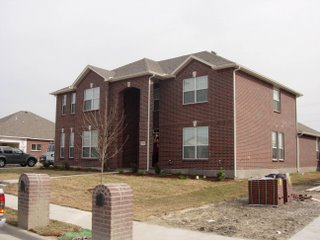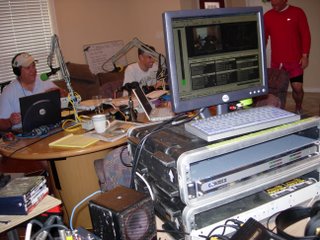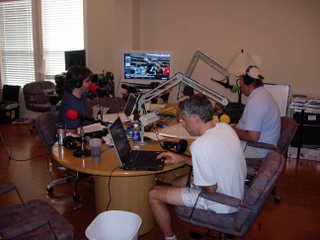So here is the email, un-edited and in its entirety, from Marvin Walther, Chief Engineer for WIOS-AM, WKJC-FM, WQLB-FM and WKJZ-FM
"We originally had a fractional T1 running from our studio in Alpena, Michigan to our main broadcast center in Tawas City, Michigan, over 60 miles away. The T1 crossed LATAS for Verizon and AT&T, and was becoming cost-prohibitive (over $1,000 a month). One of our Telos Zephyrs finally gave up the ghost and was toast after 5 years of operation. The Adtran TSU 600 units and the Zephyrs have now been replaced by a router and a dedicated business com IP connection from studio to studio via Charter internet services at both locations and the Comrex Access products. We don't cross LATAS anymore, and our bill has been cut by 75% just for a broadband connection.
The Comrex Access Rack performs well on the internet connection with only 368 Kbps upload and 3 Mbps download speed. The IP is static and the Comrex units are configured to be static as well, through dedicated routers on a seperate WAN from our existing in-house internet access. Andy at Comrex was wonderful with helping me set up these units, in fact he went beyond normal working hours one evening to help me set up the recieve-studio end. Because of this dedication to their product and customer service, I'd recommend this product. It's reliable and delivers as advertised.
We are using this product as a continuing service (always on) from one studio to the other, with a bi-directional connection that provides air monitor back to the originating studio location. There are a couple of caviats you should watch for, though. In our situation the HQ2 audio codec caused too much 'swishing" of the highs of the audio to suit me. With Andy's help we changed the codec to HQ1 and the highs improved drastically, but then the midrange seemed to become more sensitive to flanging effects and midrange boosts in equalization in processing and from Rock music programming content. However, with some EQ tweeks in processing, the midrange tamed down and the MP3-like artifacts became very acceptable for a remote STL-type broadcast.
The unit has operated for nearly two weeks in the HQ1 mode without a single audio drop-out or interuption in service. The HQ2 mode, at set-up, initially had more frequent drop-outs when accessing the Access Rack via the internet browser, and when not accessed at all it had drop-outs as well. Since changing to HQ1, though, the drop-outs don't occur at all! Because of the way the Packets arrive at the reciever for reassembly, this may not be related to the Comrex product directly. Every network is dynamic, and some networks behave better with larger Packets at slower bitrates. That seems to defy logic, but given that time domains in the IP environment are always shifting, I suppose anything is possible given the type of servers and routers used, among other variables.
Another thing to watch for is to make sure your audio source material is the best you can pipe into the transmit end of the Access. Any bad-quality, or marginal MP3's will have their inherent audio flaws accented by the Access Rack in any of the HQ modes (HQ1 being the best transmission mode right out of the box with no AAC plug-in, in my humble opinion). The HQ codecs operate at different bit rates than what is found in standard MP3's, so avoid bit rates below 128 or 192 on your transmit end and don't let your jocks play audio scavenged off the internet at questionable bit-rates through the Access, you'll probably notice the effect on the air if you do.
We could have opted to roll off the highs with the 12Khz codec, but we run satellite audio after business hours, so I wanted the audio to match up as closely as possible (with either HQ1 or HQ2 having a roll-off of 15Khz) to the satellite source. We are in the process of making every single automation music track 320Kbps MP3 at full bandwidth (44.1Khz), just to be sure we are piping the best audio we can into our transmitter. Everything could be WAV file, but the music plays from a server in our Smartcaster system, so MP3 or AAC is the best option to play the audio across the network. 320Kbps does this well and performs very acceptably through the Comrex Access Rack. In the future we plan on using the Comrex Access in linear mode when we get our own IP pipeline from the studio to the transmitter, then any concerns about audio quality will be moot. However, if you have the extra money, buy the AAC codec plug-in for the Access to save you some bandwidth and improve the audio quality. I also like the fact that these units can upgrade software codecs just like a computer, and they have a bullet-proof Linux core OS so these babies can sit right on the network and not get hit by all the crazy stuff out there on the web.
Overall, the Cost versus Performance ratio is excellent. I'd recommend the Comrex Access as a great replacement option to cut costs for T1 or ISDN service and still perform acceptably for FM broadcast. If using Access for an AM STL, I would think the performance would be just as good as any standard STL. Although not designed explicitly to be an STL, right now the Comrex Access performs well as one, and I may add reliably to this point in this engineer's experience. We are now going to commit to full purchase from BSW and retire our antique fractional T1. By the time we take the additional phone circuits off our T1 as well as the T1 itself, our savings will be about $1,100 a month even after paying for the dedicated network connection through Charter internet! Thanks Comrex, for an alternative, affordable solution that finally gives the phone company a run for its money! Competition is a good thing!
Marvin Walther
Chief Engineer
WIOS-AM, WKJC-FM, WQLB-FM, WKJZ-FM
wkjc@wkjc.com



